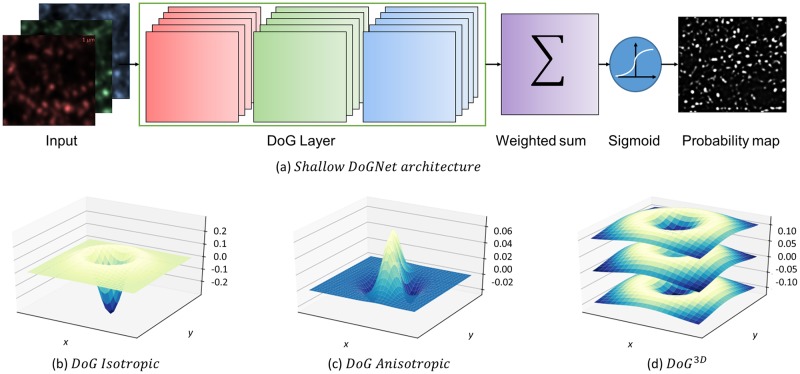Fig 2.
(a) The architecture of shallow DoGNet. The input image channels (for example synapsin, vGlut, and PSD95) are each processed by five trainable DoG filters. The weighted sum (with trainable weights) combines the resulting 15 DoG layer output maps into a single map. The sigmoid function converts the latter map into a pixel probability map. (b,c,d) The variations of the Difference of Gaussians that we use in each DoG layer. (b) An isotropic Difference of Gaussians. (c) An anisotropic difference of Gaussians. Each Gaussian is described by a pair of variance values and a rotation angle. (d) A 3D Isotropic Difference of Gaussians. Surfaces show filter values along z slices.

